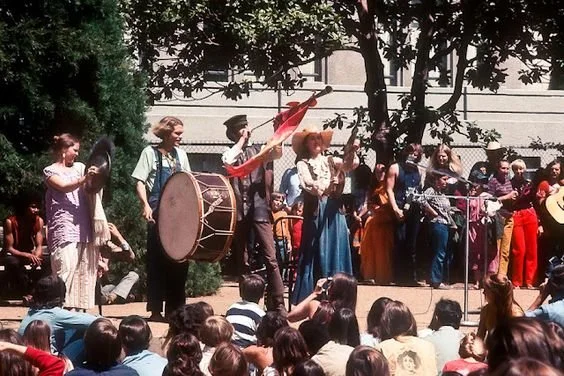A Brief History of People’s Park
People's Park in Berkeley, California, has a storied history deeply rooted in the counterculture movements of the 1960s. Here is a brief overview:
1. Early 1960s:
The land where People's Park now stands was originally intended for residential development. However, due to financial difficulties, the project was abandoned, leaving a vacant lot.
2. 1969: Emergence of People's Park:
In April 1969, during a period of intense anti-Vietnam War protests and a broader countercultural movement, the University of California, Berkeley, took control of the vacant lot. The university had plans to build athletic facilities on the site.
3. April 13, 1969: The Beginning of the Park:
On April 13, 1969, the university began clearing the land. In response, activists and community members started planting flowers, trees, and creating a communal space on the lot, transforming it into what became known as People's Park.
4. Protests and Conflict:
The university, seeking to reclaim the land, erected a fence around People's Park in May 1969. This action led to widespread protests and clashes between the authorities and activists. The conflict reached its peak on May 15, 1969, when law enforcement attempted to remove the fence, resulting in a violent confrontation that left one person dead and many injured.
5. Government Intervention:
In an attempt to restore order, California Governor Ronald Reagan declared a state of emergency and called in the National Guard to quell the protests. The university eventually abandoned its plans for athletic facilities on the site.
6. 1972: University Agreement:
In 1972, after years of legal battles and negotiations, the University of California reached an agreement with the city of Berkeley to establish People's Park as a public park. The university retained ownership, but the land was to be maintained as a park for the community.
7. Later Years:
Over the years, People's Park has continued to serve as a symbol of resistance and community activism. It has undergone various changes and renovations, and its legacy remains intertwined with the history of Berkeley's counterculture.
Today, People's Park stands as a testament to the spirit of grassroots activism and community resilience, embodying the cultural and political history of the 1960s in Berkeley.


